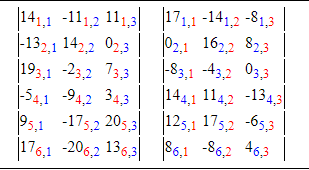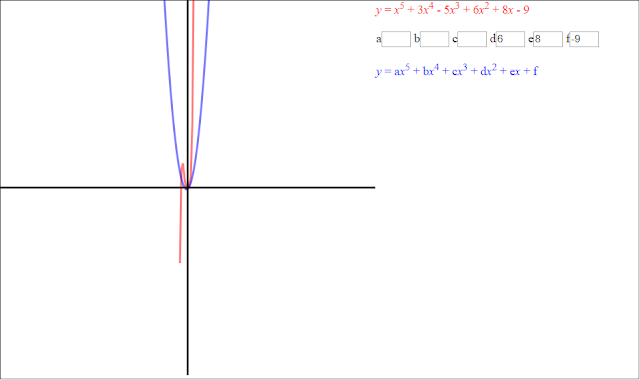General Information
Linear systems appear in many forms on the ACT and SAT (among other standardized tests, in various school subjects, and in life in general). Lines, as a reminder, have a constant slope and go on forever in both (opposite) directions. In a plane, two unique points will entirely define a line.
Below are listed the major linear forms that you will encounter.
- Slope-Intercept Form: y = mx + b, where m is the slope and b is the y-intercept
- Standard Form: Ax + By = C, where A, B, and C are all constants
- Point-Slope Form: y - y1 = m(x - x1), where m is the slope found by calculating the slope between two points, (x1, y1) and (x2, y2), and you can use either of these two points as the point (x1, y1) in the equation
Given two lines in the
xy-plane, there are only three ways in which they can interact.
- The lines can intersect once.
- The lines do not intersect. (They are parallel, have the same slope.)
- The lines intersect an infinite number of times. (The system has infinite solutions because the lines are the same line.)
Very often, you will be asked to find a solution to a linear system (if that solution exists). If two lines have the same slope but different
y-intercepts, the lines are parallel, and the system has no solution. If the lines do not have the same slope, they will intersect; there will be one solution. If the lines have the same slope and the same
y-intercept, they will be the same line.
Solving Systems
Substitution
Perhaps the most popular method of solving a linear system is performing a substitution. In a substitution, you find an expression for one of the two variables in one of the two equations, and you plug this expression in for that variable in the other equation. By doing this, the equation is now in terms of one variable.
Let's look at the following example. Find the intersection point of the following linear system.
This type of linear system is conveniently set up to perform a substitution. Because these lines have different slopes, there will be a unique point, (
x,
y), that both lines share. Clearly, at that point, the
x coordinate of each line will be identical, and the
y coordinate of each line will be identical. We substitute by setting the two expressions containing the
x variable equal to each other.
We add 3
x to and subtract 7 from both sides.
We divide both sides by 5.
We can technically substitute this value for
x in either of the original equations to find
y, but here we will substitute into both equations.
- y = 2(-3) + 7 = 1
- y = -3(-3) - 8 = 1
Our intersection point is (-3, 1).
Elimination
Elimination is generally performed when an intersection point is sought for two lines given in Standard Form. We eliminate one of the variables by multiplying one or both equations by a constant or constants in such a way that one variable expression is eliminated when the resulting lines are added.
- 2x + 5y = 40
- -3x + 6y = 21
We can perform the elimination by either multiplying the top equation by 3 and the bottom equation by 2 (eliminates the
x variable) or multiplying the top equation by 6 and the bottom equation by -5 (eliminates the
y variable). There are of course other options that we can use. Here we will multiply the equations by 3 and 2.
- 3(2x + 5y) = 3(40)
- 2(-3x + 6y) = 2(21)
After performing the multiplications we have the following.
- 6x + 15y = 120
- -6x + 12y = 42
Now, we add the two equations and get the following.
We now divide by 27 and find
y.
We can substitute this value of
y back into any of the equations, but we will use both of the original equations to prove that the intersection point is identical for each.
- 2x + 5(6) = 40
- -3x + 6(6) = 21
Next...
- 2x + 30 = 40
- -3x + 36 = 21
Next...
Finally...
Our intersection point is (5, 6).
Linear System Shortcuts
There are a number of shortcuts that you can use to solve questions involving lines quickly. Below is a list of a few of these shortcuts, and it will grow longer as I think of more.
- The points (5, -16) and (-2, -9) lie on the same line. Because the sum of the x and y coordinates for both points is -11, the equation for this line is x + y = -11. Whenever you find two points on a line whose coordinates sum to the same value, the equation of that line in Standard Form is x + y = sum. The coordinates of every point on this line must have this sum.
- Given a linear system in Standard Form (like the one below), if A1⁄A2 = B1⁄B2, then the lines have the same slope and are at least parallel. If A1⁄A2 = B1⁄B2 = C1⁄C2, the lines are the same line.
- A1x + B1y = C1
- A2x + B2y = C2
This works because all of the slope information lies on the left side of the equation when a line is in Standard Form.
- Given a linear system in Standard Form (like the one below), if A1⁄B1 = -B2⁄A2, then the lines are perpendicular.
- A1x + B1y = C1
- A2x + B2y = C2
Again, this works because all of the slope information lies on the left side of the equation when a line is in Standard Form. Thus, all we need to show is that these coefficients have a negative reciprocal relationship to show that the lines are perpendicular.
Example Problems
- If line m, going through points (-3, 8) and (7, -2), intersects line n, having slope 2 and going through point (3, 2), at the point (a, b), then what is a + b?
- Show that the following system has no solution.
- Show that the following system has an infinite number of solutions.
- 5x + 4y = 8
- 3x + 12⁄5y = 4.8
- Show that the following lines intersect perpendicularly.
- 5x + 4y = 8
- -8x + 10y = 9











